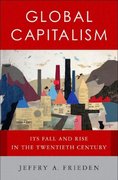Question
203 (15 points) Suppose that an economy has a constant nominal money supply, a constant level of real output Y=1500, and a constant real interest
203
(15 points) Suppose that an economy has a constant nominal money supply, a constant level of real output Y=1500, and a constant real interest rate r= 0.05, and it's expected rate of inflation is 2%, i.e, T = .02. Suppose that the income elasticity of money demand is 7y=0.5 and the interest elasticity of demand 7=-0.2. (a) Suppose that Y decreases to 1425, r remains constant at 0.05 and there is no change in the expected rate of inflation. What is the percentage change in the equilibrium price level? (6) Suppose that r increases to 0.06 and Y remains at 1500. Assuming that expected inflation remains atr* = .02, what is the percentage change in the equilibrium price level? (c) Suppose that r increases to 0.06. Assuming that r = .02, what would real output have to be for the equilibrium price level to remain at its initial value?
Suppose that the demand equation for a monopolist operating in Nairobi is and the cost function is C(x) = 50x + 100 where x is the production level a) Given that the total revenue R (x) =xP and that the Total Profit realized P(x) = R(x) - C(x), determine the R(x) hence the P(x).( 4 Marks( b) Using the result in (a) above determine the production level x that maximizes Profit and hence the maximum profit.(6 Marks)
c) The marginal revenue function (MR) for a product is MR = 44 - 5q. The marginal cost is MC = 3q + 20, and the cost of producing 80 units is Ksh.11,400 where q are the number of units produced and sold. i. Determine the total profit function P(q) (8 Marks) ii. Using the result in (i) above, and the profit or loss from selling 100 units of the product
Explain how each of the following transactions generate two entries- a credit and a debit- in the Canadian balance of payments account, and describe how each entry will be classified:
(i). During travel in France, a Canadian citizen buys a dinner in a French restaurant for $100 and pays with a visa credit card. [2.5 points]
(ii). A Canadian-owned factory in Britain used local earnings to buy additional machinery. [2.5 points]
(B). Assumed in a closed economy: Y= C + I + G C= a + b(Y - T) T= d + tY Where, Y = Output, I = Investment, G = Government expenditure, C = Consumption and T = Taxes
a, b, c and d >0
(i).What are the endogenous and exogenous variables in this model? [2.5 points]
(ii). What is the equilibrium value of Y? [2.5 points]
The amounts of money ($) spent by 14 students for their breakfast this morning are:
10, 9, 7, 5, 10, 9, 10, 3, 5, 7, 8, 7, 7, 10
a. Calculate the sample mean, median, and mode. Interpret these values. What type
of distribution does it represent, symmetric, skewed to the right or skewed to
the left?
b. Calculate the sample first quartile, third quartile, and interquartile range.
Interpret these values.
c. Calculate the sample standard deviation. Interpret this value.
Ramsey model, COVID-19 shocks. Government expenditures and TFP
1.a.-Government expenditures: Assume that the economy is converging to its long
term steady state along the saddle path. At time t=0, it has a level of capital per
effective worker given by k(0), which is half of the steady state level of capital, k*.
At time t=0 it is learned that the government expenditure changes from 0 to a level G(1)>0,
and that the change will take place for T periods, and back to 0 thereafter.
Show the qualitative dynamics of consumption and capital.
How is T affecting the dynamics?
1.b.- TFP.- Assume that the economy is converging to its long term steady state
along the saddle path. At time t=0, it has a level of capital per effective worker given
by k(0), which is half of the steady state level of capital, k*.
At t=0 it is learned that
total factor productivity drops temporarily from z to z' and that the change will take
place for T periods, and back to z thereafter. Show the qualitative dynamics of
consumption and capital
Step by Step Solution
There are 3 Steps involved in it
Step: 1

Get Instant Access to Expert-Tailored Solutions
See step-by-step solutions with expert insights and AI powered tools for academic success
Step: 2

Step: 3

Ace Your Homework with AI
Get the answers you need in no time with our AI-driven, step-by-step assistance
Get Started


